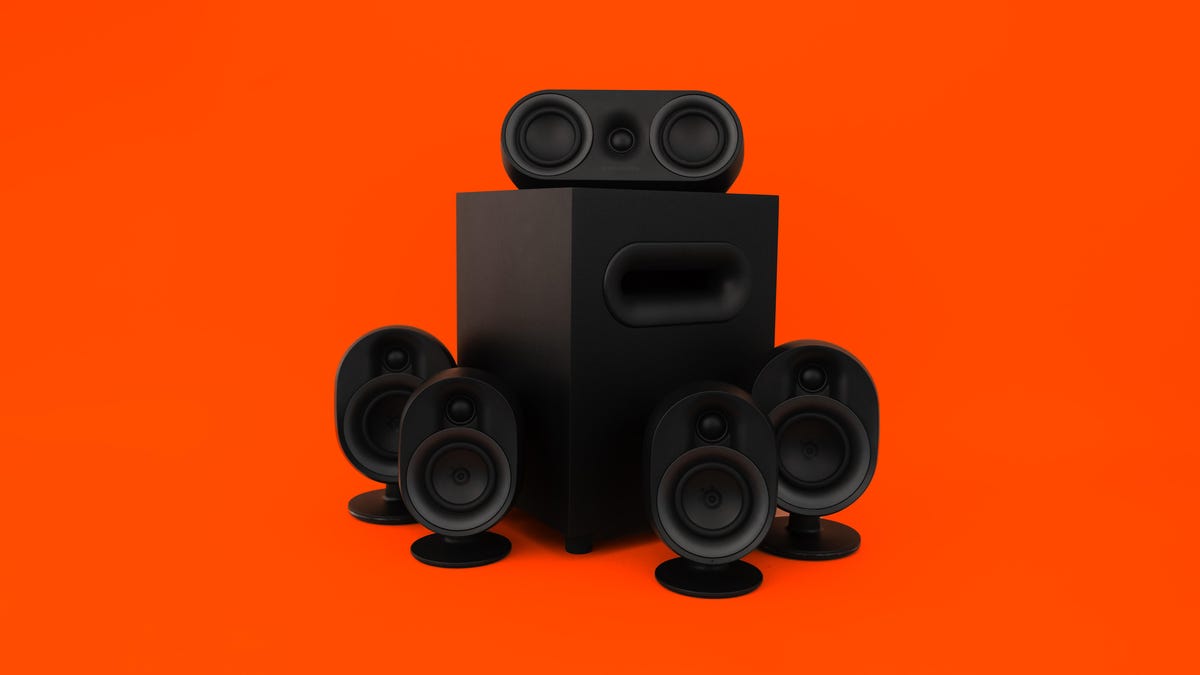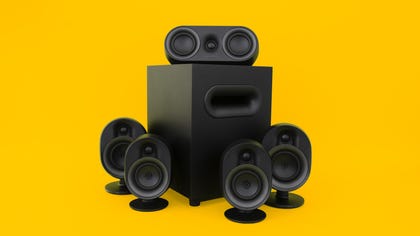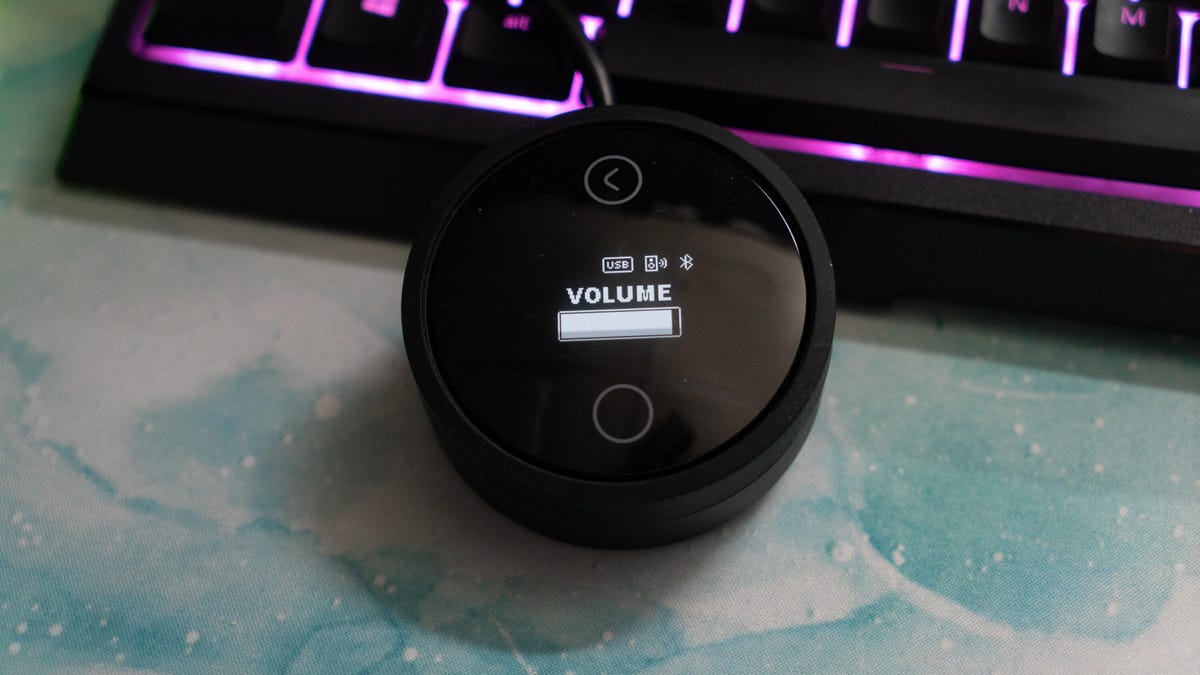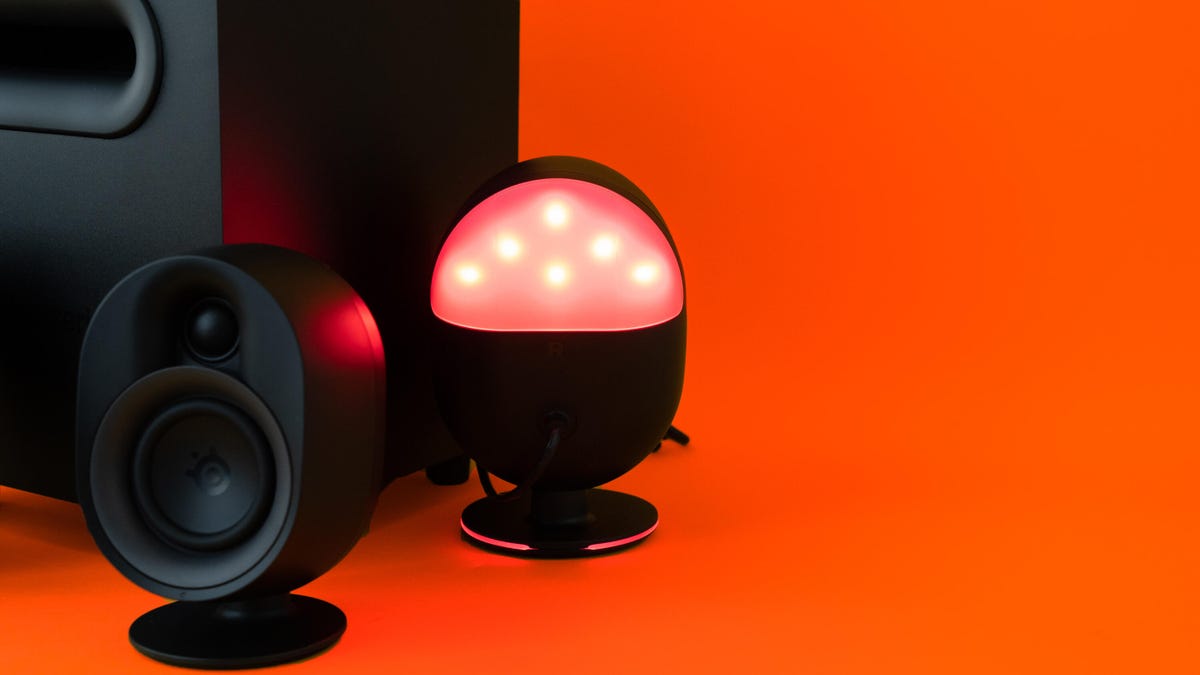SteelSeries Arena 9 Gaming Speakers Review: Powerful 5.1 Surround for PC

Lori Grunin/CNET
SteelSeries has long been making some of our favorite gaming headsets, but the Arena line of gaming speaker systems represents new territory for the company. It’s launching with three models, all available today: the $130 stereo Arena 3, 2.1 channel Arena 7 and $550 5.1 surround Arena 9. And because you don’t usually wear a headset with speakers, SteelSeries has also introduced the $100 Arena Wireless Mic, an on-ear boom mic that uses a 2.4GHz dongle-based connection rather than Bluetooth. (Overseas, the Arena 3 is £30 and AU$150, the Arena 7 costs AU$330 and £300 and the 9 is priced at AU$600. The 9 doesn’t seem to be available in the UK.)?

SteelSeries Arena 9
Like
- Delivers 5.1 surround sound on PC via USB with good software control
- Fun but functional design
- Solid set of wireless and wired connection types
- Great Sonar software
Don’t Like
- Need to sign in to an account for Sonar, which controls all the settings
- Relatively limited settings adjustable via the control pod
- PS5 Upmix surround hit and miss
- no ability to control individual channels
Yes, that price for the Arena 9 is pretty high, especially given there aren’t a ton of 5.1 surround options for gamers, a small pack more or less led by the $400, fan favorite Logitech Z906. The standout novelty of the Arena 9 is its ability to connect to PC and PS5 via USB, in addition to a simultaneous Bluetooth or optical and 3.5mm analog auxiliary jack.?
In the case of the PC, USB means you can control and adjust the speaker settings and profiles in a way you can’t over other connection types, such as SteelSeries’ Sonar software’s excellent parametric equalizer and spatial audio adjustments (discussed in my review of the SteelSeries Arctis Nova Pro headset).?
One big hole in the software (and control pod) that I miss is the ability to manually tweak the balance across some of the channels. For example, you can adjust the equalization parameters for chat on the playback side, but I’d love to be able to tweak where the voice comes from.
Like most gaming audio, though, unless a system specifically supports Dolby Atmos, THX or another third-party architecture, surround flexibility pretty much stops at the PC. In this case, SteelSeries’s proprietary Sonar also drops off the map. SteelSeries compensates with a PS5 Upmix toggle on its control pod, which processes the stereo digital signal and turns it back into surround-ish sound.?

The simple control pod offers limited adjustment options which max out at custom and preset equalization profiles and a handful of lighting choices. It does have a headset jack.
Lori Grunin/CNET
While the spatial works well on the PC, the Upmix can be hit or miss, such as in Tiny Tina’s Wonderlands where the muddied voices were almost impossible to understand. But in Horizon Forbidden West it did provide a much better experience. I think part of the issue is that the PS5 treats the system as headphones rather than speakers.?
Plus at times it seems like Upmix weights the rear channels too heavily and the center channel gets lost. That’s too bad, because the system has solid, two-way (separate drivers for high and mid frequencies) center and front satellites. You’re probably better off without PS5 Upmix, which burns a little given the price.?

The front left and right satellites have rear-facing illumination and a light ring around the base of the stand. You can remove the stand and wall mount them as well.
Lori Grunin/CNET
Its down-firing subwoofer isn’t huge, but it’s relatively powerful at 200w with 6.5-inch drivers, capable of producing the thundering bass of Doom Eternal’s soundtrack. My front satellites seemed to have a slight disconcerting vibration that I think may be a side effect of the double drivers (which means more surfaces vibrating to produce the sound).
SteelSeries Arena 9
| Price | $550 |
|---|---|
| Channels | 5.1 |
| Driver material | Fiber and silk |
| Subwoofer | 6.5-inch down-firing |
| Audio in/out | USB-C, optical in and out, 3.5mm auxillary on sub, 3.5mm headphone on control pod; Bluetooth |
| Platforms supporting all the important features | Windows |
| Platforms nominally supported | Universal 2.1 via Bluetooth, analog, optical |
The satellites have an organic, functional design that I like, with four-zone illumination on the front satellites that can sync with the content on your screen (once again, that’s for PC only). Its rear channel speakers connect wirelessly to the rest of the system, but are tethered to each other and to a power supply, which may limit their placement flexibility a little.?
Their stands detach so you can mount them to a wall. Because they’re two-way, though, they’re bigger than they look in photos. And if you’ve got a confined space to place them in where they’re either completely behind or in front of something something (like your monitors), the illumination can get kind of lost. It made me wish the center channel had lighting, too.
The Arena 9 isn’t a gaming speaker system you buy just to get a break from a headset; it’s too expensive for that, and a good surround headset delivers a less expensive, albeit more intimate experience. But the flexibility of connections and the high-quality sound may be worth it if you’re specifically looking for a full-time speaker system with good software control. As you might expect, the less expensive Arena 7 will probably be the more crowd pleasing model, but there’s a boatload of competition for the 2.1-channel buyer.

The Arena Wireless Mic comes with three sizes of ear clips. It includes a foam mic cover as well.
Lori Grunin/CNET Arena Wireless Mic
A standalone product intended for speaker listeners, SteelSeries’ $100 dongle-connecting wireless boom mic is a good chat alternative with a low-key design that makes it an excellent videoconferencing option as well. It’s pretty simple, with a power/pairing button to connect to the dongle and USB-C port for charging and a choice of three, different size snap-in ear clips.
The sound is very crisp and clear by default, plus you can use Sonar’s excellent tools for changing equalizer settings (like lowering the highest pitches of your voice, a biggie for me), noise cancellation, noise gating and so on. The dongle allows for a headset-like low-latency connection more suited to gaming than typical boom-mic uses, like teleconferencing.
On the other hand, the mic has two potentially deal-killing pitfalls, depending upon your situation. First, the battery life is short — it’s rated at 4.5 hours, with a 15-minute change giving you an hour of battery. That’s not short given the size of the battery, but short for long-running sessions.
The other is that I find it difficult to position properly on my ear — not impossible, it just takes some two-handed work — and when it’s not in correctly it’s too wobbly. Even then I feel like it’s going to fall off if I move my head too suddenly. Plus, it’s not very glasses friendly when not positioned precisely. Although when it is, the earpiece of the glasses does help decrease the wobble. Once it’s settled, it’s pretty comfortable.
Game console reviews
- Sony PlayStation 5 Review
- Microsoft Xbox Series X Review
- Microsoft Xbox Series S Review
- Nintendo Switch OLED Review
- Meta Quest 2 Review
- Valve Steam Deck Review
See the latest CNET gaming coverage here.?